Posts by andy
Desolation Sound to Alert Bay
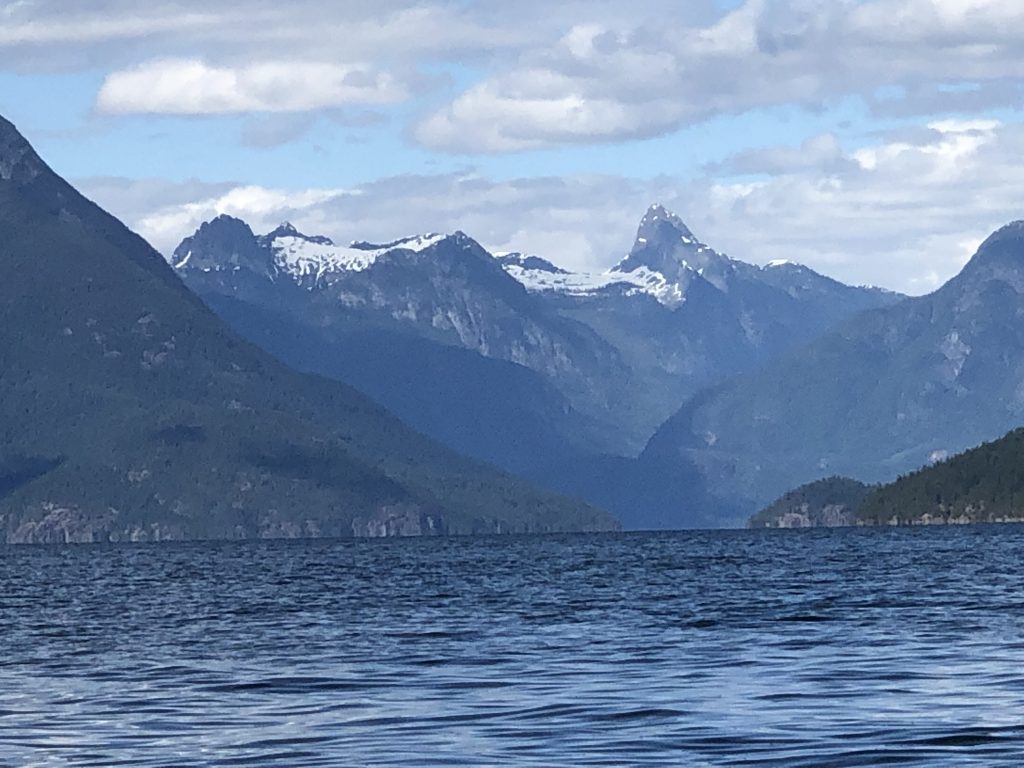
In Desolation Sound
IT WAS 88 NAUTICAL MILES from Squirrel Cove, in Desolation Sound, up windy Johnston Strait, to Alert Bay. On the way to the First Nations fishing town, we passed three large salmon net pens, owned by Norwegian aquaculture companies.
Aboriginal people have been fishing these waters for hundreds of years, and people in Alert Bay believe the net pens threaten the environment and their livelihoods.
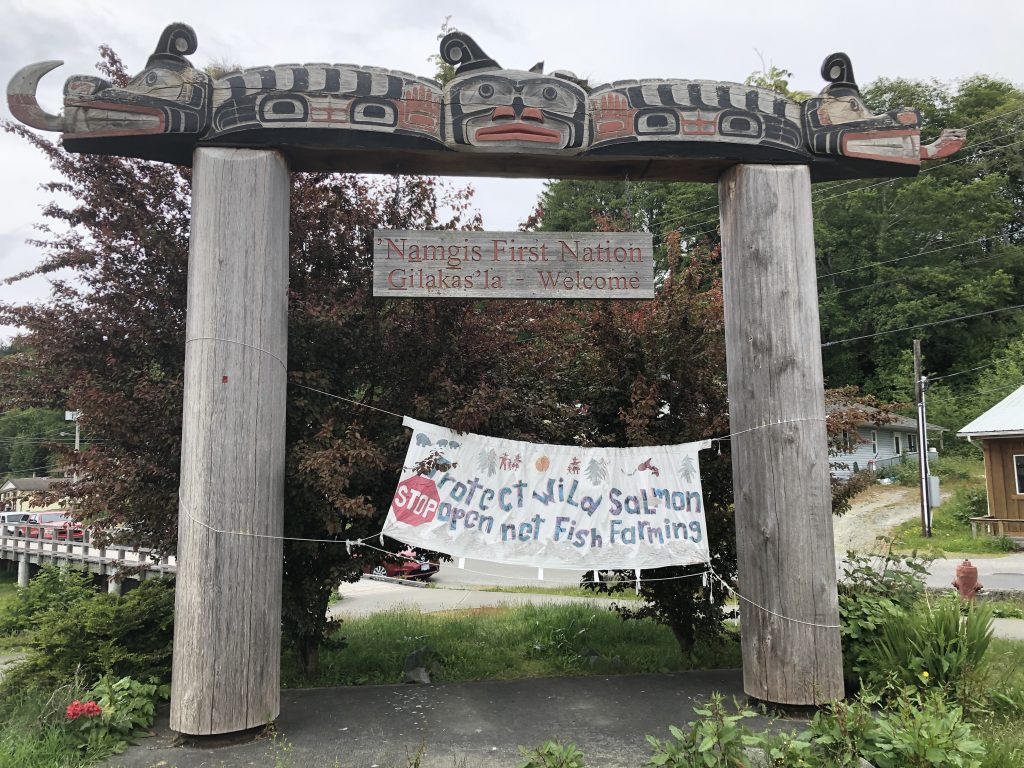
Alert Bay
During breakfast at the Bayside Grill, where we ate local halibut and chips the night before, I met a friendly man named Art Shaughnessey. Art grew up in Alert Bay, and his family’s last name was Maxwa (he has it in his license plate) before the authorities changed it, a hundred years or so ago, to something they could pronounce. When Art grew up, he went off to become one of the first aboriginal members of the Royal Canadian Mounted Police.
In the time he served with the RCMP, Art never felt accepted, never felt like a member of the white boys’ club. But he toughed it out and stayed—for 35 years. Good for you, Art!
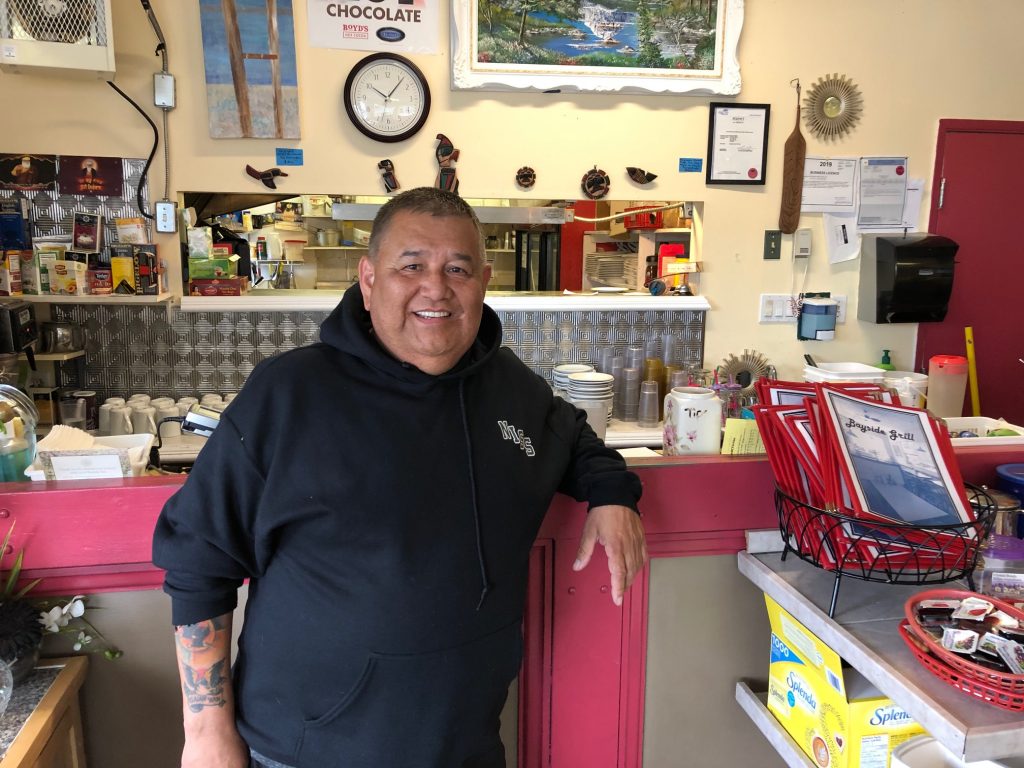
Art Shaugnessey
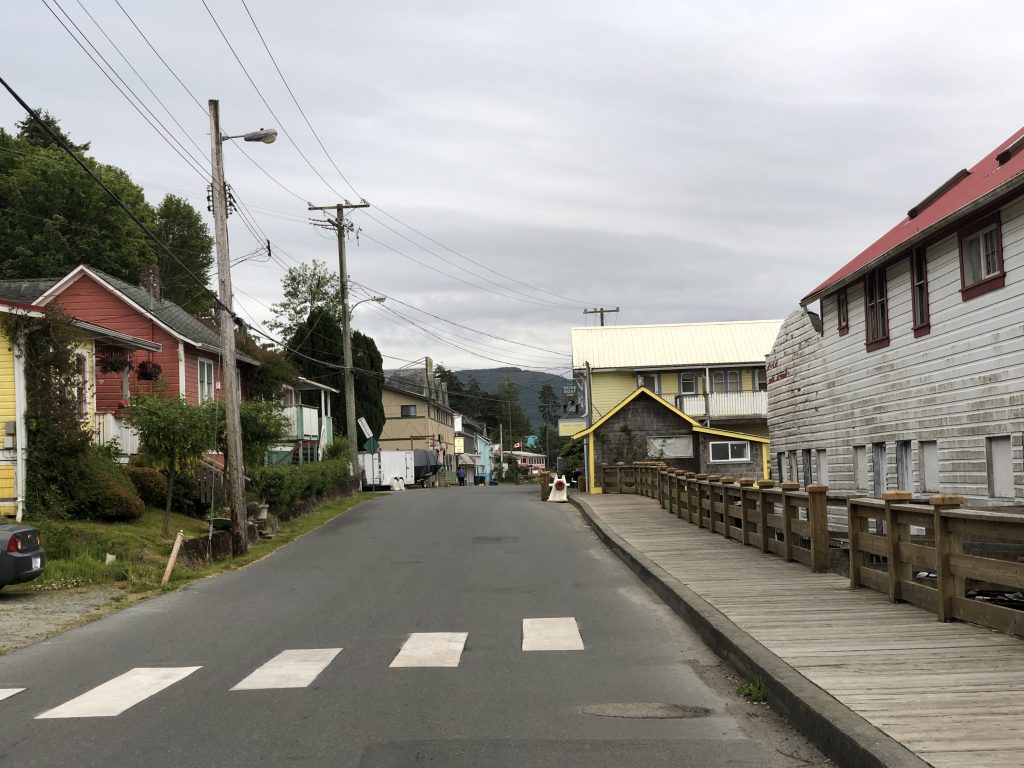
Fir Street, Alert Bay’s main drag
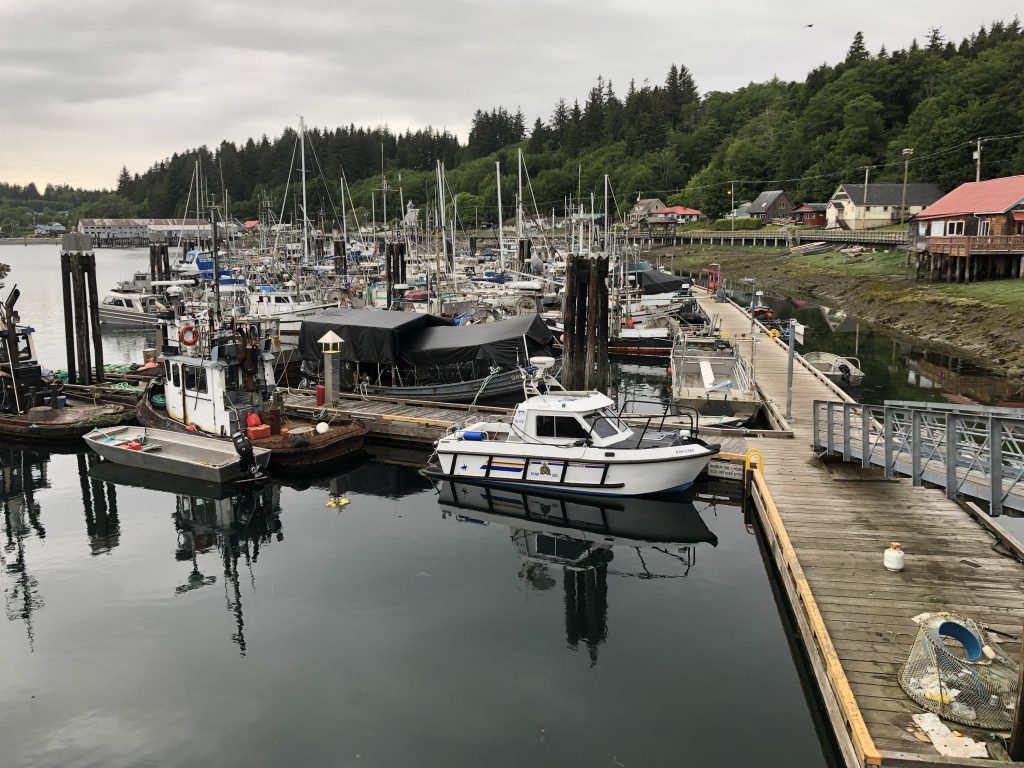
Fishing, for wild fish, is the main business in Alert Bay
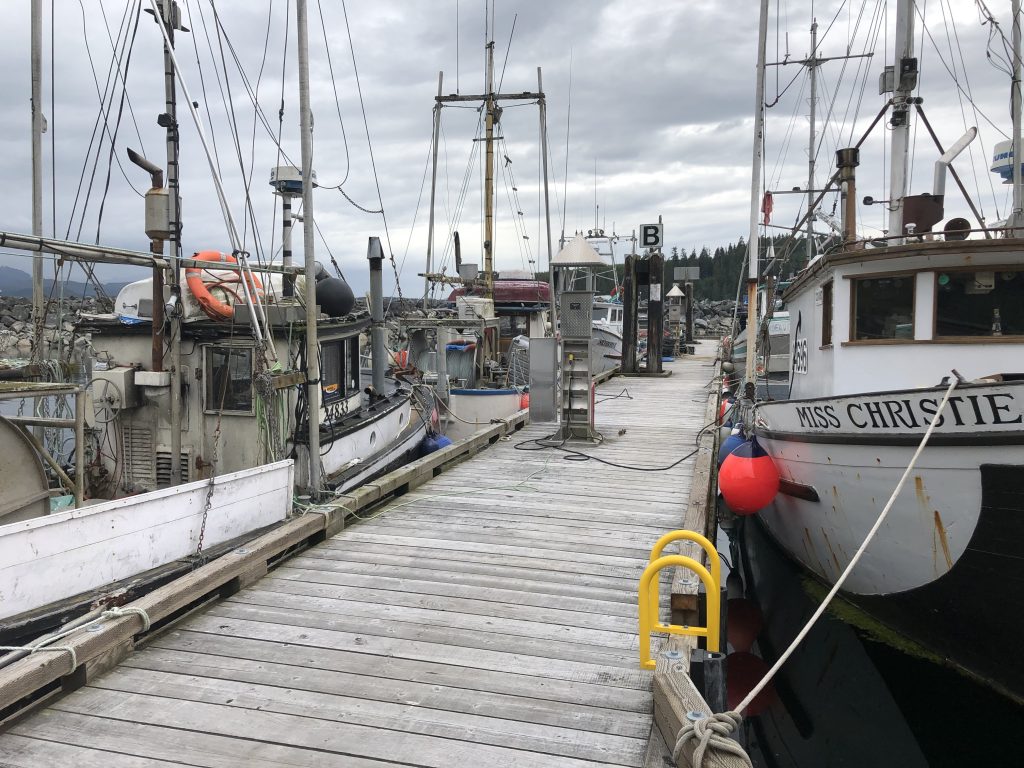
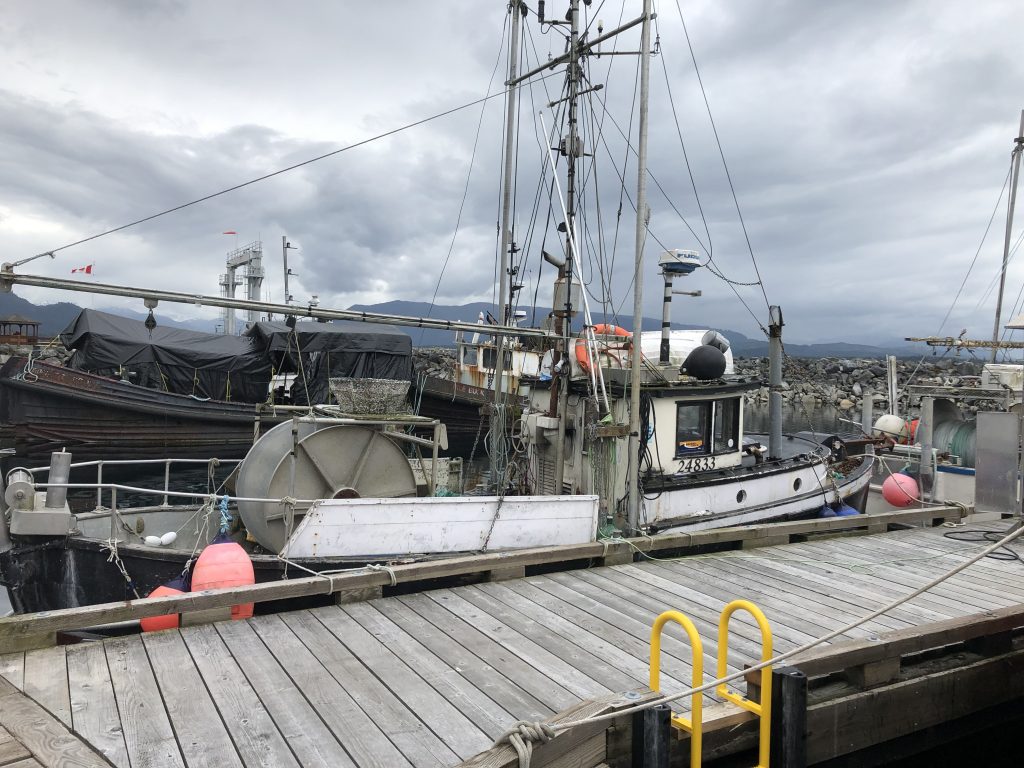
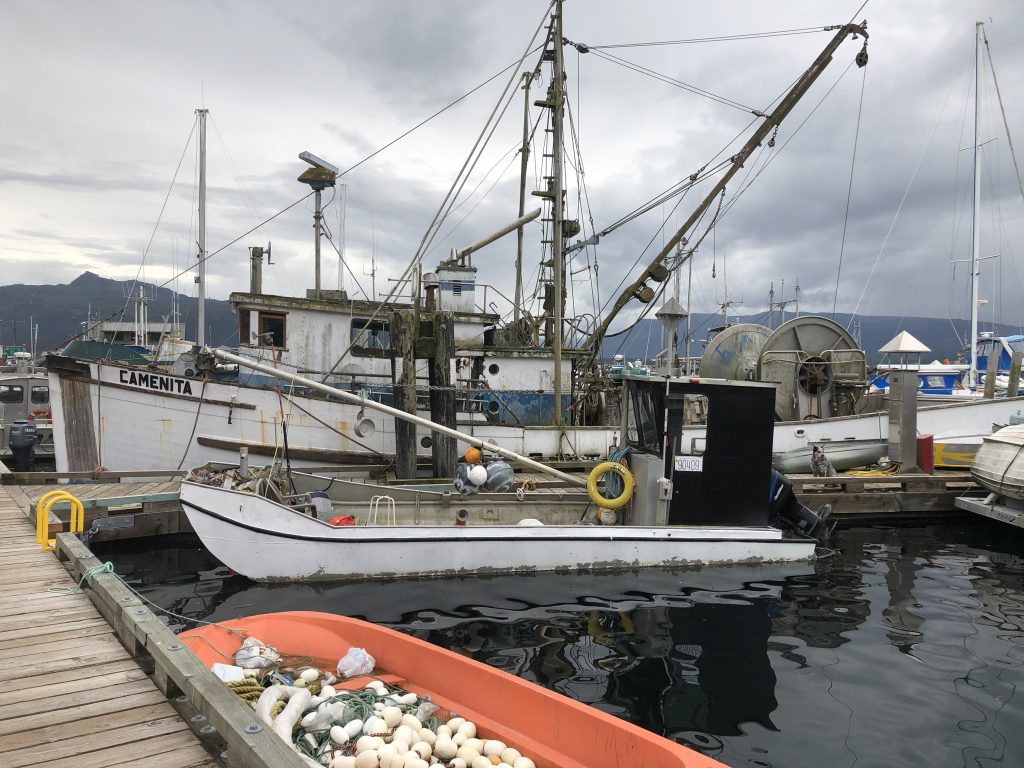
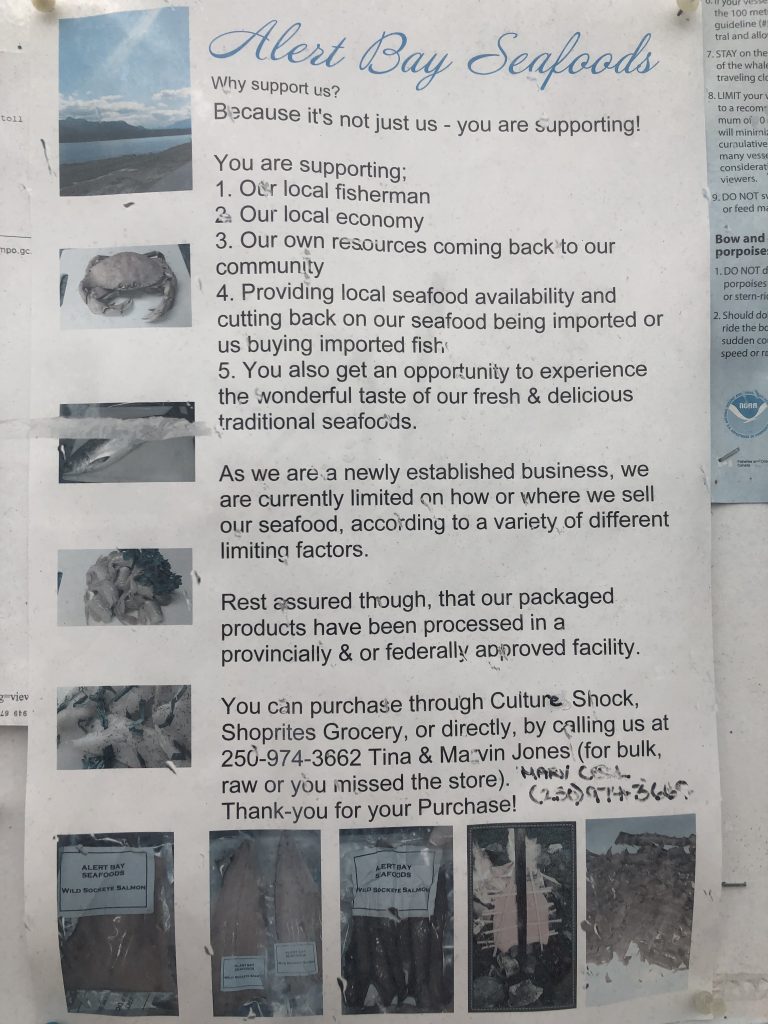
Night in Nanaimo
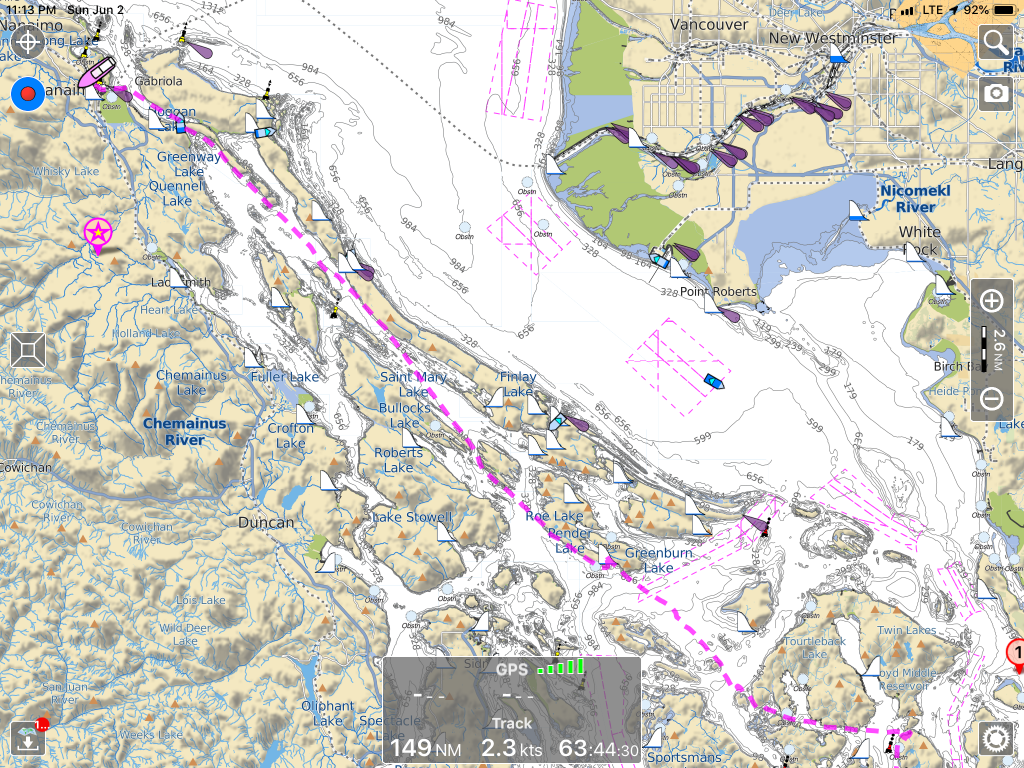
Blakely to Nanaimo
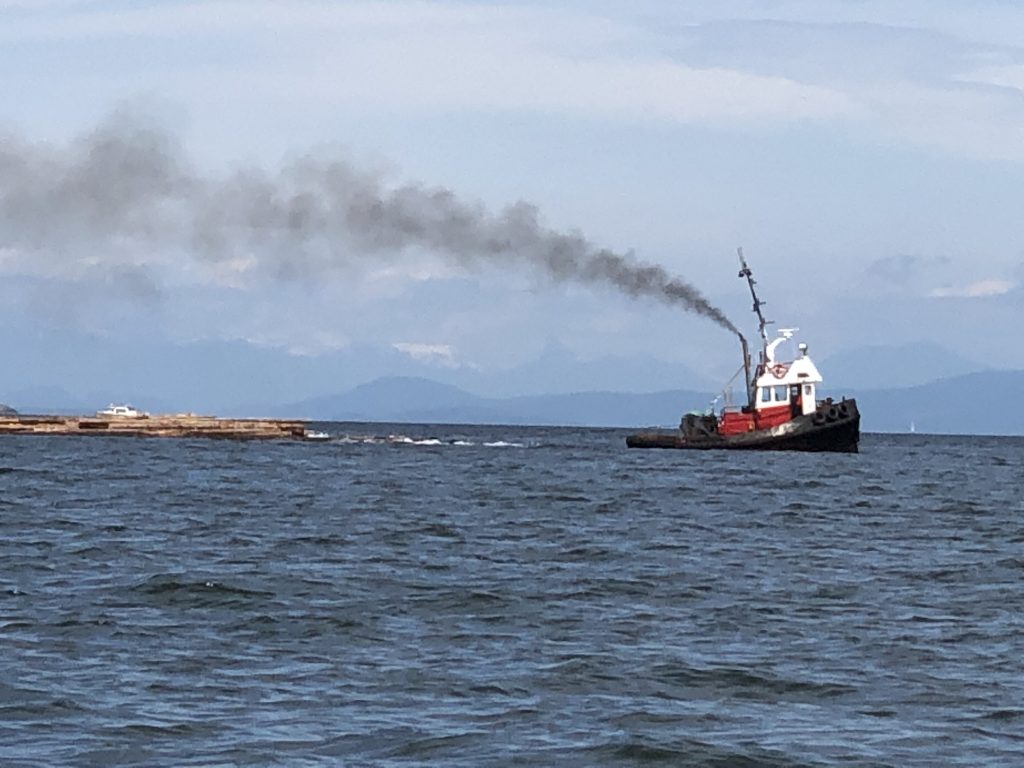
Tug and log raft
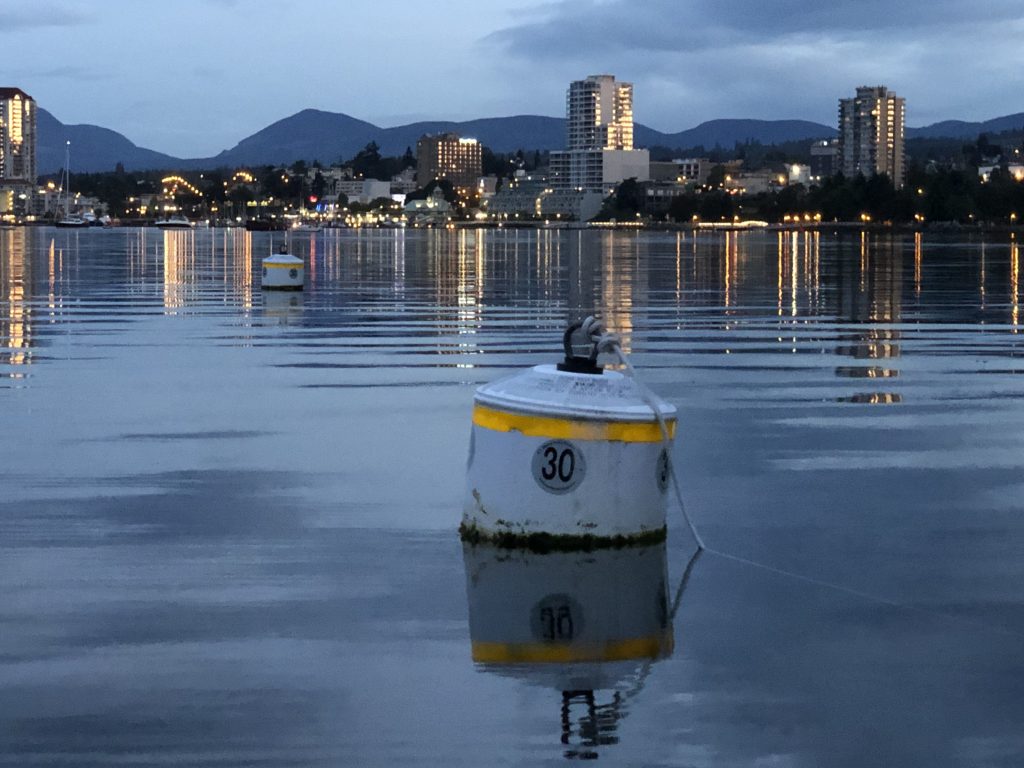
Lights of Nanaimo

Aaaack!
THIS IS LIKELY TO BE THE LAST night I’ll have an Internet connection for a while—and a good thing it is, because the wireless vultures have descended on me in force.
Great trip today from Blakely Island up to Nanaimo, where we gassed up. Then we moored in Mark Bay, on Newcastle Island, and went for a paddle. I showed Sam how to perform a bow rudder stroke; then I heard a big splash behind me and saw he had capsized. The water in Mark Bay was very warm, and Sam seemed to actually enjoy his involuntary dunking.
After dinner of Mountain House beef stroganoff, I sat down in the back porch, looking out across the bay at the lights of Nanaimo—and my iPad started ringing as Verizon started sending me bills for the past three days of service. It was supposed to be $5 a day for their travel plan, but somehow—they allege—I have already rung up $50 in charges.
Anyway, we’re heading out across the Strait of Georgia tomorrow, to a place where (I pray) the wireless vultures can’t find us. The weather forecast calls for light winds Monday morning, and with any luck we may make it as far as Desolation Sound.
I’ll be able to send short messages to this blog using my Garmin inReach satellite device, but no pictures and—hooray!—no cellular data!
Rough crossing to the San Juans
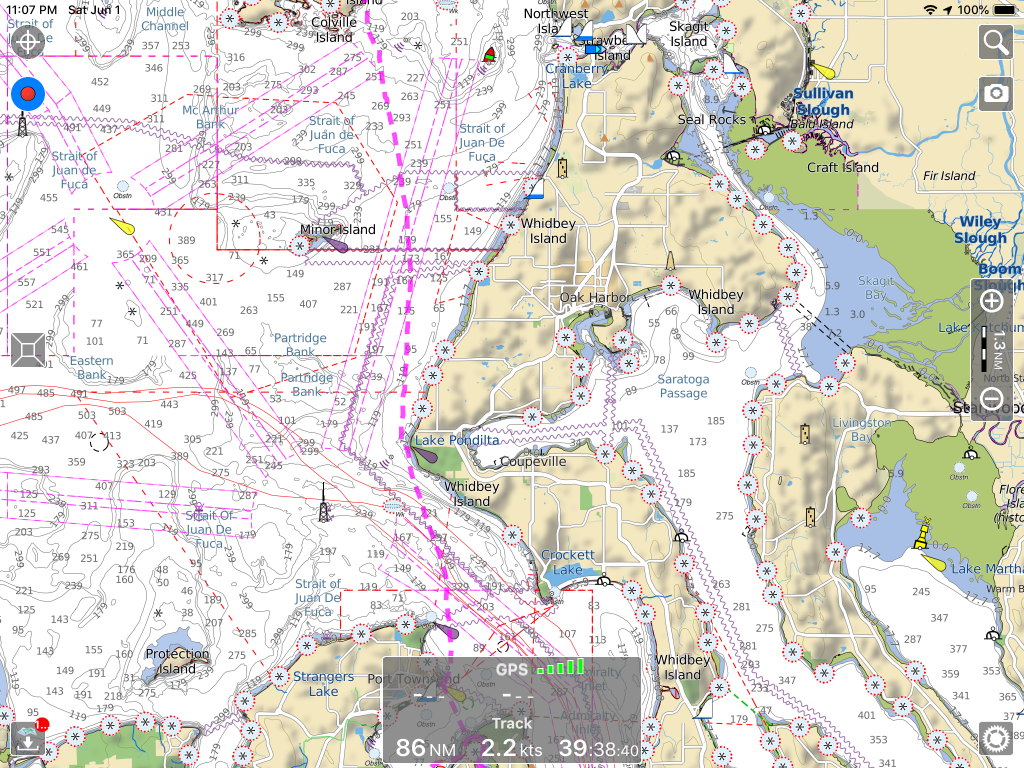
Port Townsend to Watmough Bay

Wild roses on Blakely Island
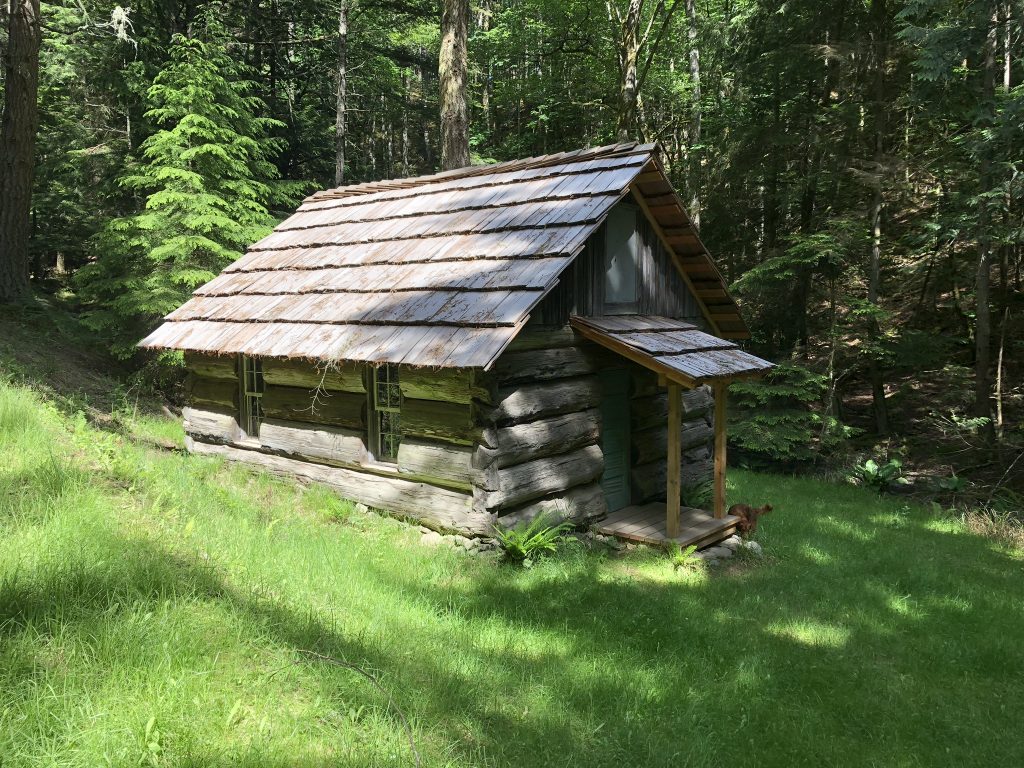
Blakely Island school house
SAM AND I LEFT PORT TOWNSEND at 7:30 this morning, and as soon as we got around Point Wilson, we were in nasty four- and five-foot seas blowing down the Strait of San Juan de Fuca from the Pacific. I was navigating without my reading glasses, and as we approached Partridge Point, on Whitney Island, I failed to notice the chart notation warning of kelp.
The water intakes on Osprey’s twin Tohatsu 50 engines clog easily, and before I could get out of the kelp bed, the overheating alarms on both motors started screaming. It took a couple of minutes to shut down the engines, get them lifted out of the water, clear the kelp from the intakes and get started back up—and then we were back in big, confused waves all the way to Watmough Bay on the south end of Lopez Island. Yipes!
From there it was smooth sailing through Lopez Pass up to Blakely Island, where we met Ellen, an old friend from grade school who has a vacation home there. Ellen gave us a tour of the big private island in her old Ford Explorer, with stops at the pretty lake which is the source of the island’s fresh water supply, and at an old one-room log school house. After a fantastic dinner, we’re heading off to bed. We plan an early start this morning for our entry into Canadian waters.
Andy’s wife was born this day, in 1956. Happy birthday, Marla Jean!
Thanks Harvey

Harvey Hochstetter and Andy Ryan at Mystery Bay, Marrowstone Island
HARVEY HOCHSTETTER DROVE his 22-foot C-Dory Sleepy C down to meet us, from Sequim, on the first day of our trip, Friday—and escorted us all the way back up to Mystery Bay, on Marrowstone Island. We hung out there on the state park dock before Sam and I headed over to Port Townsend, where we spent the night at the Point Hudson Marina.
We’re off!
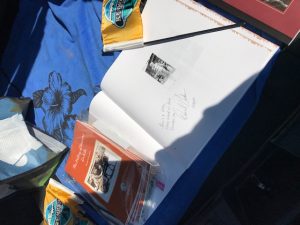
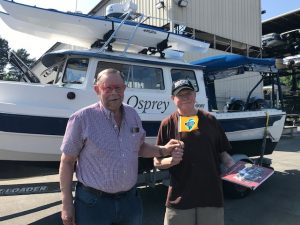
Kenmore Mayor David Baker wishing us a bon voyage as we prepare to launch at Northlake Marina.
We’ll be leaving Kenmore Harbor in about a half-hour, bound today for Point Hudson Marina, in Port Townsend. Today’s Puget Sound marine forecast calls for “variable wind to 10 knots, becoming south in the afternoon. Wind waves 1 ft or less. Patchy fog in the morning.”
Yesterday afternoon, we launched Osprey at North Lake Marina. Kenmore Mayor David Baker and his delightful wife Sheri stopped by to wish us bon voyage, and to provide us with gifts to take to towns in Alaska.
V-berth remodeling project
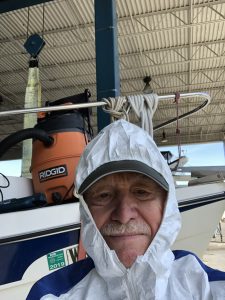
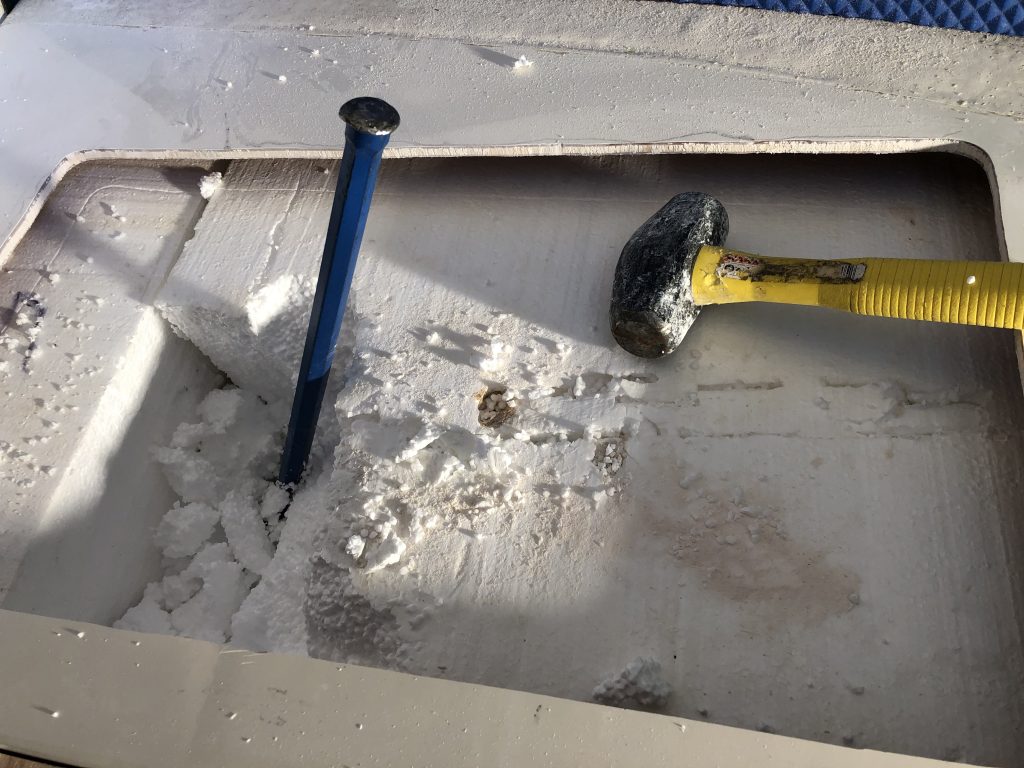
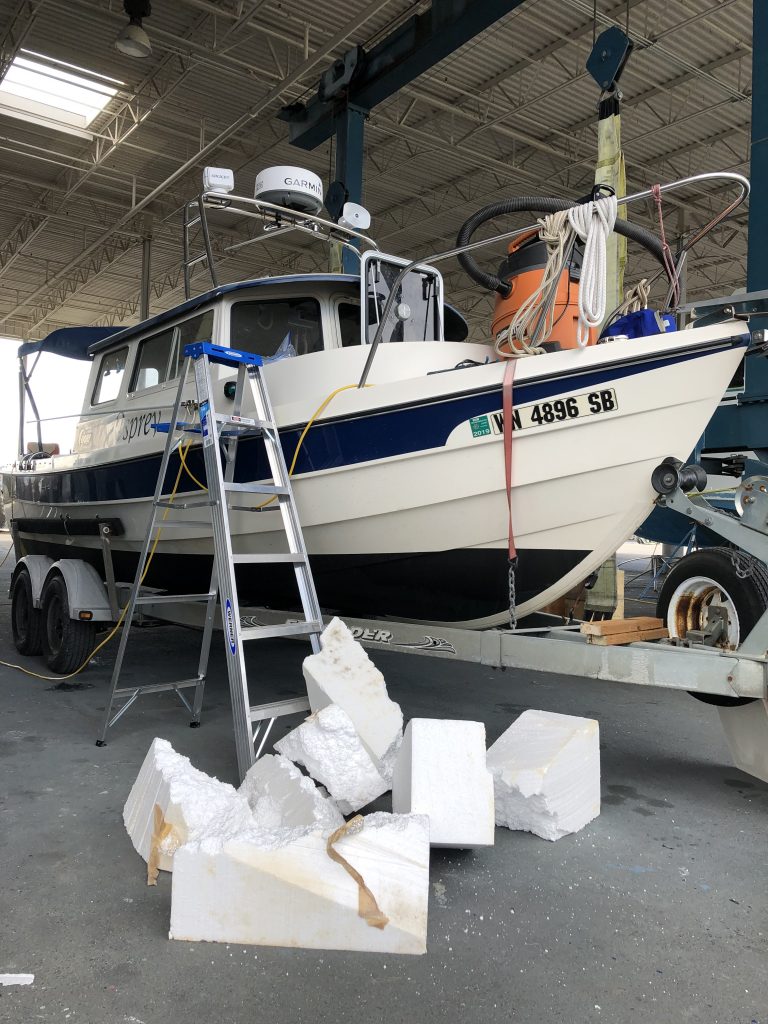
THE C-BRATS WEBSITE, an amazing resource for people interested in these cool little boats, inspired me to renovate my V-berth, to create more storage space for our Alaska trip. Read about this project.
Shakedown trip
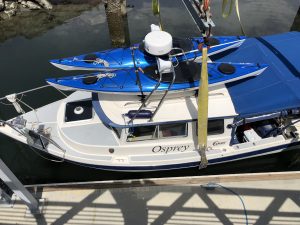
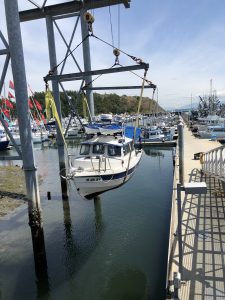
DAVE ORTLAND AND I TOOK OSPREY out this weekend for a shakedown cruise, in preparation for next week’s departure. After stopping by the Eddyline factory in Burlington, where we picked up a pair of new Skylark kayaks, we launched at Anacortes’ Cap Sante Marina. From there, we motored about 20 nautical miles, at 5 knots, to lovely Sucia Island.
With 35-knot winds forecast for that evening, we anchored in little Ewing Cove, just off the beach in 12 feet of water. As usual, the Mantus anchor dug in and held us securely … while the wind howled and Osprey sailed back and forth like a marlin trying to break loose from a fishing line.
One of the main purposes of the trip was to learn what kind of gas mileage we’re likely to get at low speeds. All told, over four days of traveling between the islands — Sucia to San Juan to Stewart to Orcas — we logged about 97 nautical miles at an average GPS speed of 5.5 knots. (I won’t know what kind mileage we got until I gas up, tomorrow.)
Highlights of the trial run were the tranquil and almost empty island anchorages, the way the 12-foot Skylarks performed (stable, nimble and surprisingly fast), and Dave’s marvelous one-pot glop dinners. Yum.
We’re going to have a great trip.
One month to launch
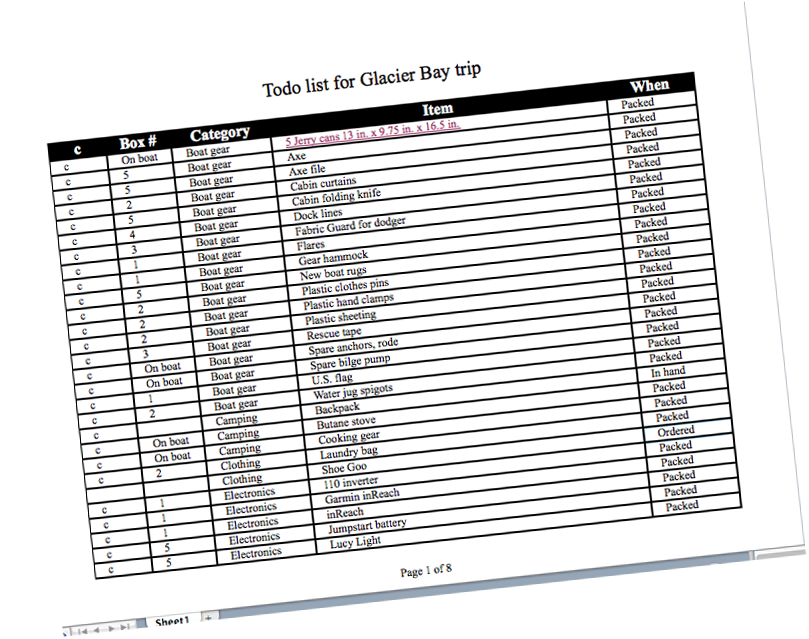
OSPREY’S PACKING LIST HAS GROWN, a lot, since my last post, a month ago.
My buddy Paul looked at the earlier list, and wrote:
“The ToDo list reveals you to be every bit the gearhead I remember, but of course boat ownership does little to discourage that tendency I’ll bet. Anyway, it’s really cool.”
I have been stewing about this, being unjustly labeled a “gearhead.” Like other gearheads, I have always regarded the term as a pejorative. Paul is a psychiatrist, and I think tendencies are things shrinks try to help you get over, right? Like my tendency to stew over perceived slights. Doesn’t “gearhead” sort of imply a tendency toward frivolous acquisition of unnecessary stuff? Are there meds that can help me with that?
Actually, what I think I am is a Boy Scout, with a tendency to obsess about Being Prepared.
There is a website dedicated to C-Dories, and I have been talking with one of the contributors there, Dr. Bob Austin, who has done a number of epic ocean-crossings in sailboats. Bob was an Eagle Scout, and he is way more prepared than I ever will be. The other day I asked him to suggest what tools and spare parts I should take on my trip. He obligingly dashed off the following list. After I added numbering to help me keep track … I saw that Bob had written a beautiful seafaring poem:
Tools and Spares
By Dr. Bob Austen
-
- Generally a set of extra filters for the in line filters (hopefully Racor),
- and the first stage filter under the cowling.
- I tend to always carry a spare water pump impeller, even if you have had it replaced recently — which you should have done within the last year at least.
- I take an extra squeeze bulb,
- extra prop,
- nuts,
- cotter pin,
- thrust washer
- and a prop wrench.
- Also a piece of wood to stabilize the prop if you have to put a lot of leverage on the prop nut (you shouldn’t and
- I would pull the prop, clean and re-grease the shaft and splines.). The newer props don’t often have the fuel pump go out, but on the 25, I do carry an automotive inline fuel pump and small filter to put in front, plus some extra tubing.
- I carry at least 4 quarts of oil and a spare oil filter for the outboard.
- Funnel for filling oil.
- A quart of approved hydraulic fluid and adaptor for the steering pump (or funnel).
- I also carry a quart of lower unit lube, and pump with adaptor if necessary for your motor.
- A set of extra spark plugs.
- I also put a small Jabsco in line water pump — which we used for filling up water filters etc — and a secondary / back up for the whale foot pump. This electric pump has only a stiff momentary push button switch (like a starter switch)
- small and large crescent wrenches.
- A set of open end / Box wrenches in metric and SAE for all size bolts on the boat.
- A basic 1/4″ and 3/8″ drive socket set, metric and SAE. Include spark plug wrench.
- Allen wrenches, metric and SAE.
- Multifunction screw drivers, including Robertson (square) bits in #1 and #2.
- Small and mini screw drivers. I carry one very large screw driver flat head, or Phillips, for the lower unit access ports.
- Needle nose pliers,
- water pump pliers
- a filter wrench.
- I also like “Chain Vise Grips” as well as regular, large and small Vise Grips.
- I do carry a couple of alignment punches,
- a small ball peen hammer,
- a cold chisel (1/2″ size).
- A small SS wire brush (about 1/2″ wide and 8″ long handle)
- Heavy Vinyl electric tape,
- self amalgamating tape
- rescue tape
- Duct tape
- SS seizing wire.
- Small ropes: 1/8″ Dacron line, as well as a spool of net or “bank line).
- Zip ties, small to large
- set of extra hose clamps in every size on the boat.
- A tube of Kwik JB Weld
- and regular JB weld.
- A tube of 3M 4000.
- A patch kit for the inflatable if you have one.
- A set of fast set clear epoxy tubes.
- If you have any thru hulls, then a nerf or wooden plug of the size of the hole, and the orifice of the thru hull.
- One of the Li battery packs which are for starting the engine, powering USB devices etc.
- A multimeter,
- a #14 set of cables with alligator clips,
- a piece of #12 or 14 wire about 20 feet long (enough to bypass to the console.
- I have a good ratchet crimper,
- and an assortment of connectors — heat shrink — adhesive lined, plus the heat shrink adhesive lined tubing.
- Wire stripper/cutter.
- A 30 watt small soldering iron, or a butane soldering iron/torch.
- That is one “pencil case” About 12″ and 4″ wide case with a zipper on the 12″ side made of plastic or ballistic nylon.
- Cigarette or barbecue lighter (better yet the small torch).
- I also carry a multiple speed Dremel tool, with a compete small case of commonly.used bits, including cut off wheels for both metal and plastic, flat and round sanding discs/drums. (also in one of the pencil) cases.
- Know what the fuel burn of your boat is at each RPM and Speed. That way you can plan the longer trips if you don’t have fuel flow meters. (I have put fuel flow meters on all of the C Dorys which I have used for longer trips — but also keep a chart of the fuel flow and range at each RPM handy at the helm. Some of the AK run I have done part at displacement speed–and then when I knew I had enough fuel to make my next fuel stop cranked up the speed. An example of when you may want to crank up speed, is between the slack high water at passes. At displacement speeds, you can usually only make one a day. At C Dory 20 MPH speeds you can make 3 a day. Also the C Dory will do fine on passes as long as not too much of an overfall or whirl pools. I have gone thru some with 10 knot currents. But these were ones I had been thru before and had a good idea about whirlpools or standing waves — overfalls not being a problem.
- Also swing the compass and have a deviation table or card for your compass, with lights and / or electronics off and on. Know your variation for current dates and positions.
- The last few times, I have just taken an Atlas of the area — instead of the several hundred charts I had on the cal 46. I also like the tourist map, which shows the whole inland passage. I still have mine, and had marked the route of each of our trips on it. I believe this is the one I have.. {Fine Edge also makes two “MAPS” one Southern and one Northern. I like either of these to use for planning.
I am sure I have forgotten some items …
… along the Inside Passage …
THE INSIDE PASSAGE (from Wikipedia) “is a coastal route for ships and boats along a network of passages which weave through the islands on the Pacific NW coast of North America. The route extends from southeastern Alaska, in the United States, through western British Columbia, in Canada, to northwestern Washington state, in the United States.
“Ships using the route can avoid some of the bad weather in the open ocean and may visit some of the many isolated communities along the route. The Inside Passage is heavily travelled by cruise ships, freighters, tugs with tows, fishing craft and ships of the Alaska Marine Highway, BC Ferries, and Washington State Ferriessystems.
“The term ‘Inside Passage’ is also often used to refer to the ocean and islands around the passage itself.”
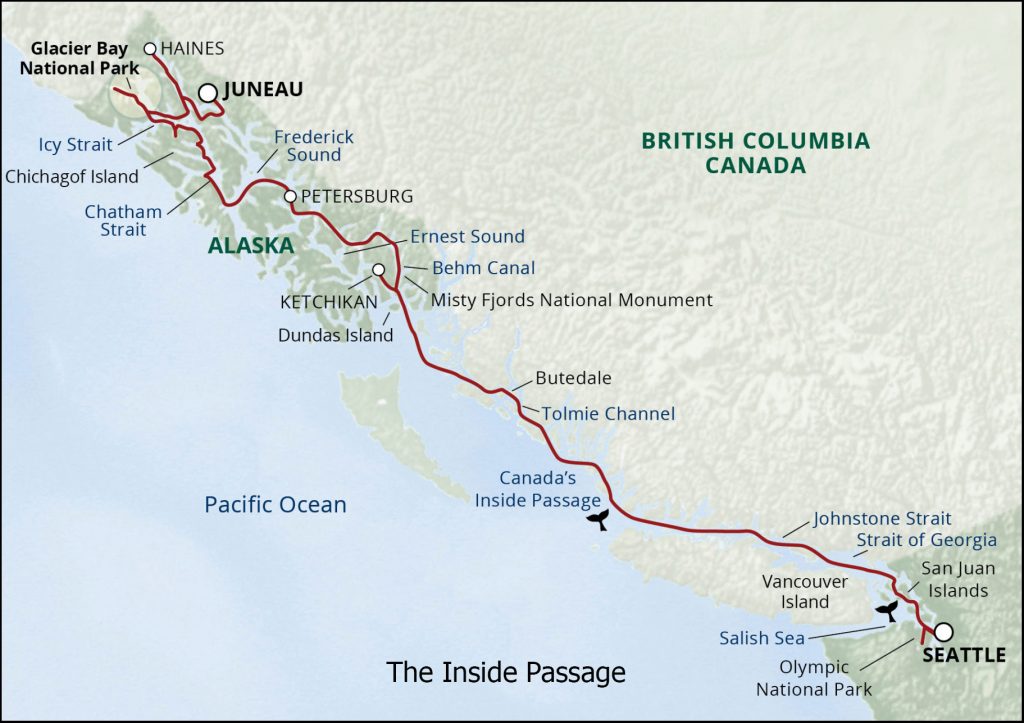
Two months to launch
WITH OUR TRIP SCHEDULED TO START IN TWO MONTHS, we’re busy with last-minute work on the Osprey. The bottom has been coated with anti-fouling paint. Roof rails, which will hold a pair of 12-foot Eddyline Skylark kayaks, have been reseated (bolt holes sealed with butyl tape), and a new Wallas stove installed.
Week after next, the boat will go over to EQ Harbor Service, at Cornet Bay, for some last-minute work, including installing a new Airmar P66 transducer capable of measuring speed through water. Cathy, Carl and Stan have been fantastic to work with, getting Osprey ready for the trip.
Our very partial todo list includes:
- Make appointment for boat maintenance in Ketchikan
- Clean and fill water tank
- Clean sliding window tracks
- Reposition radar reflector
- Food provisioning for trip
- Install new insect screens
- Repairs to window curtains
- Build web page with InReach map (that’s what I’m doing right now!)
- Start a box of materials, e.g. Tohatsu manual, for trip
- Get stern line reel
- Start trip expense ledger
- Install Hypervent under V-berth mattress
- Buy new cabin rugs
- Buy four additional 6-gallon Gerry cans
- Clean, waterproof and re-install camperback
- Measure area under berth for Scepter water containers
- Install new wiper blades
- Lube steering
- Install Airmar P66 transducer (part # 010-10192-21)
- Pick up spares (extra prop, oil filters, impellers, spark plugs, wiper blades, etc.)
- Install new lazarette hatches
- Reset engine maintenance meter
- Review tool kit contents
- Fix starboard gas tank cap chain